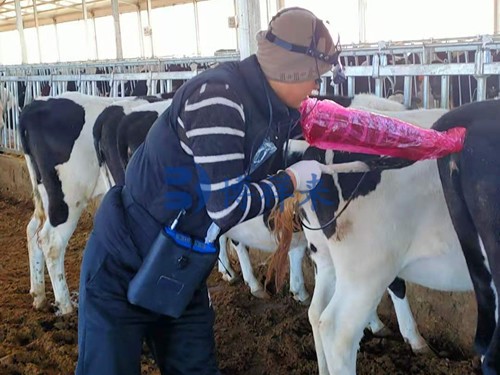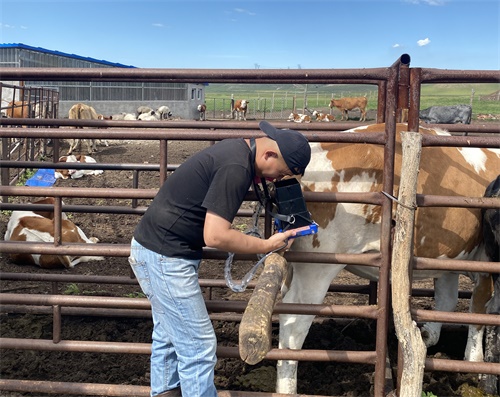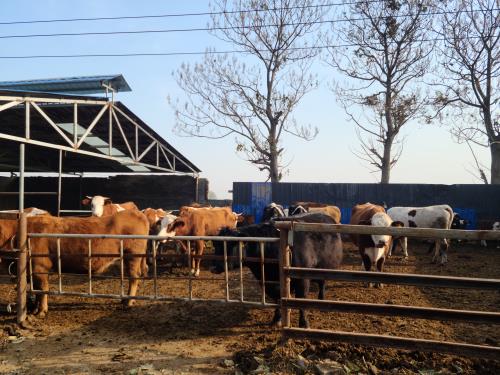As a livestock farmer managing a diverse herd—beef cattle, sheep, goats, and sometimes even pigs—knowing precisely when an animal is pregnant and understanding its fetal and maternal condition can transform decision-making. Whether planning nutrition, grouping, veterinary care, or timing births, reliable information is key. Among modern tools, ultrasound technology—particularly portable B‑mode scanners like the BXL‑V50—offers a non-invasive, real‑time, and data‑driven way to support pregnancy detection, fetal assessment, and growth monitoring across species. In this article, I’ll describe how ultrasound supports precision farming in mixed‑species operations, combining global best practices with hands‑on farm examples.
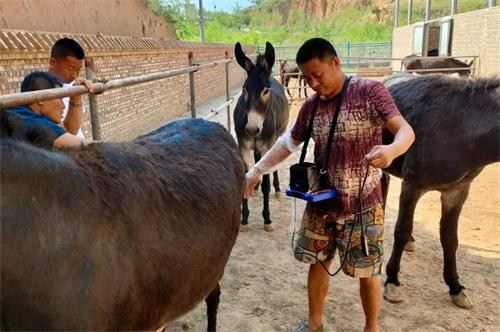
1. Why Pregnancy Diagnosis Matters in Mixed‑Species Herds
1.1 Economic and Operational Planning
In operations keeping multiple species, pregnant females require different nutritional regimes, housing, and care schedules. Early detection lets us:
Adjust feed to support gestation.
Allocate labor and housing space effectively.
Plan cash flow and forecast marketable animals.
Schedule veterinary checks to enhance survival and reduce abortion risks.
In countries like Australia and New Zealand, where sheep and cattle are farmed together, early pregnancy scanning (as early as 45 days in sheep and 60 days in cattle) is standard practice to improve lambing and calving rates.
1.2 Animal Welfare and Welfare Certification
Consumer demand for humane livestock care has spurred welfare standards worldwide. Objective pregnancy confirmation reduces unnecessary handling, abortions, and late-term stress. In the UK, welfare auditors cite ultrasound documentation to verify proper pregnancy management.
1.3 Environmental Precision and Sustainability
Precision livestock farming aims to optimize resource use. By targeting pregnant animals for higher energy rations or supplements, farms avoid waste and reduce environmental impact. This aligns with sustainability goals in the European union’s agri‑environment schemes.
2. How Ultrasound Pregnancy Scanning Works Across Species
2.1 B‑mode Ultrasound: A Universal Tool
B‑mode scanners generate a grayscale anatomical image. The BXL‑V50, a waterproof handheld model, is favored globally for its durability, species presets, and image clarity. Farmers can switch presets to scan bovine uterine horns one moment and small‑ruminant fetuses the next.
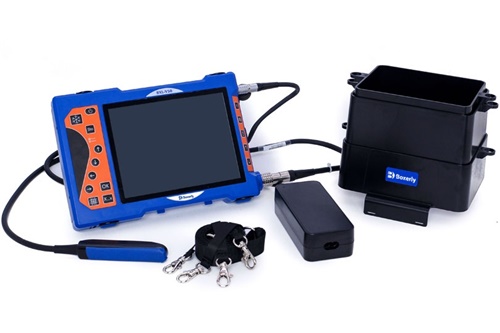
BXL-V50 Portable veterinary ultrasound
2.2 Species‑Specific Pregnancy Protocols
Cattle: Rectal or transrectal scans at ~35–60 days. At 60 days, fetal heartbeat and size are clear; viability and fetal age can be assessed.
Sheep and goats: Transabdominal scanning at ~45–90 days. Multiple fetuses and fetal viability are quickly identified.
Pigs: Transabdominal ultrasound at ~25–40 days to count embryos—crucial given larger litter size.
Camelids/others: With training, the same tool can be used for llamas and alpacas, though scan windows differ.
2.3 Advantages of the BXL‑V50
Portable and rugged for field use.
Multi-species software presets.
Real-time measurements: crown–rump length, gestational sac diameter, amniotic fluid quantification.
Connects to mobile devices for photo record, remote consultation, and farm management software integration.
3. Integrating Pregnancy Scans into Farm Management
3.1 Grouping Animals by Fertility Status
After scanning:
Pregnant females can be moved to gestation flocks/pens with appropriate nutrition.
Non-pregnant are identified early—ideal for rebreeding or sell-off.
High-risk (e.g., single-fetus sheep) can receive targeted monitoring.
This grouping improves feed efficiency, labor allocation, and animal welfare.
3.2 Feed Forward: Nutrition Driven by Gestation Stage
Based on gestational age:
Early gestation: moderate maintenance energy.
Mid-gestation: increased protein and energy for fetal growth and placental development.
Late gestation: highest nutrient levels to support rapid fetal gain.
This avoids blanket feeding, minimizes under- or over-nutrition, and ensures better reproductive performance.
3.3 Health Management: Timely Interventions
Ultrasound helps detect:
Hydramnios (excess fluid), multiple fetuses in sheep.
Uterine lesions or persistent corpora lutea in cattle.
Abortions in progress or fetal demise.
With early detection, farmers can treat promptly or plan interventions—reducing disease spread and losses.
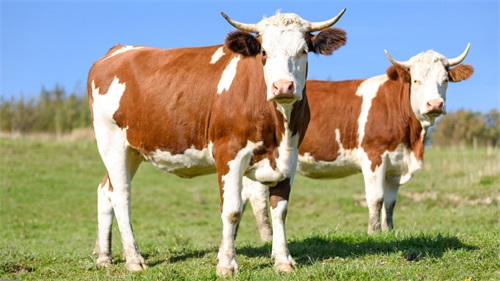
4. Insights from Around the World
4.1 North American Mixed Farms
In the U.S. Great Plains, farms running both cattle and sheep use dual-preset ultrasound units. One Nebraska operator reported pregnancy scanning at 45 days in sheep and 60 in cows, reducing feed expense by 15% and improving calving/lambing rates by 10%.
4.2 European Agroforestry Systems
Farmers in France raise cattle, goats, and sheep under agroforestry systems. Thanks to ultrasound:
Goats are managed by litter size to optimize kidding nutrition.
Replacement heifers are scanned early for dystocia risk.
Sustainability funding is accessible by documenting precise animal management with ultrasound records.
4.3 South American Ranches
In Uruguay and Argentina, B-mode ultrasound is used by mobile “pregnancy clinics” traveling between farms. They use battery‑powered, waterproof units like the BXL‑V50 to scan thousands of mixed-species animals during roundups—aiming for > 90 % calving and lambing rates.
5. Beyond Pregnancy: Tracking Fetal and Maternal Health
5.1 Fetal Growth Monitoring
Repeat scans allow tracking of fetal growth curves and detection of intrauterine growth restriction (IUGR). For instance, scanning at 60 and 90 days in cattle shows if a fetus lags—prompting improved maternal nutrition.
5.2 Placental and Amniotic Monitoring
Abnormal amniotic fluid levels or placentome size in cattle can be early warning signs of infection. Real-time imaging can reveal these anomalies, helping avert miscarriage.
5.3 Postpartum Prospects
Pelvic diameter measurement at late gestation in goats indicates dystocia risk, letting farmers plan for targeted veterinary assistance or elective c-section.
6. Embedding Ultrasound Data into Farm Precision Systems
6.1 Digital Recordkeeping
Data—including images and measurements—are tagged per animal via RFID or ear-tag linked to farm management software. This enables:
Gestation tracking dashboards.
Automated nutrition or group alerts.
Traceability reports for quality audits or certification schemes.
6.2 Data Analytics and Decision-Making
Aggregated scan data across species help farms optimize:
Overall pregnancy rates.
Feed conversion ratios per gestation stage.
Birthing success rates and neonatal mortality.
Machine learning models can predict outcomes; for example, linking maternal back-fat depth to newborn survival in goats.
7. Training and Skill Transfer
7.1 Operator Proficiency
Successful scanning depends on operator training:
Handling different anatomy across species.
Transducer orientation and image interpretation.
Animal handling to minimize stress and ensure accurate results.
In Australia and Canada, agricultural extension services offer certification programs, often field-based with hands-on ultrasound training.
7.2 Calibrating to Multiple Species
Common mistakes—like misidentifying fluid pockets or fetal parts—are minimized by multi-species refresher courses. Farms often invite Veterinary ultrasound specialists for onsite training.
7.3 Remote Support via Tele‑Ultrasound
Thanks to systems like the BXL‑V50, images can be shared with remote vets in real time—allowing expert interpretation and mentoring of farm staff without travel time. This empowers small mixed farms to practice precision management.
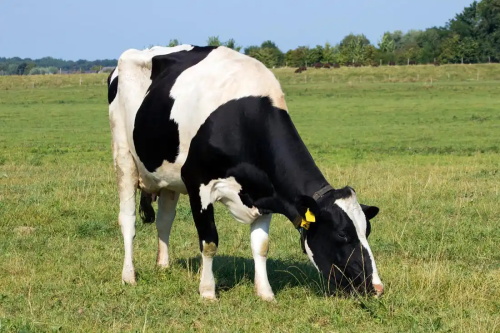
8. Economic and Environmental Payoffs
8.1 Return on Investment
Pregnancy scanning reduces unnecessary feed costs and improves reproductive returns.
In sheep, early identification of non-pregnant ewes allows shorn return to pasture or sale, avoiding feed for empty animals.
In cattle, timely detection of twins or non-viable pregnancies prevents late-term losses and veterinary bills.
Overall, mixed-species farms report 10–20% improvements in feed efficiency, and 5–15% gains in reproductive metrics after implementing routine ultrasound scanning.
8.2 Reducing Environmental Impact
By delivering nutrition precisely to pregnant animals, total feed usage—and associated carbon footprint—declines. This is critical under metrics such as GHG per kg of lamb or beef. In the EU’s “carbon farm” payment systems, pregnancy scan records are often required to qualify.
8.3 Animal Welfare and Consumer Trust
Welfare-conscious consumers equate ultrasound‑based care with producers’ commitment. Farms using these tools gain trust and often access premium markets—particularly in organic, traceable, or certified‑welfare supply chains.
9. Challenges and Practical Solutions
9.1 Cost of Equipment
Multi-species scanners like the BXL‑V50 range from USD 3,000–5,000. For small farms, this upfront cost can be significant. Options include:
Cooperative ownership among neighboring farms.
Mobile scanning services (common in Latin America).
Leasing equipment.
9.2 Skill Acquisition
Mastery takes time. Farms can invite agricultural veterinarians for yearly refresher training or leverage virtual training platforms and peer learning groups.
9.3 Handling Logistics
Scheduling large groups for scanning requires coordination, especially with multiple species on different estrous cycles. Some farms cluster scanning weeks, others scan each species separately. Planning around breeding windows keeps disruption minimal.
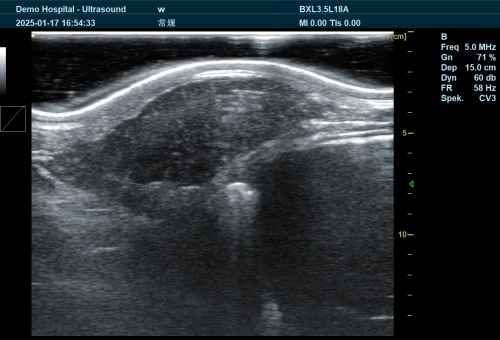
10. Future Directions and Technological Innovation
10.1 AI‑Enhanced Image Analysis
Emerging systems are using machine learning to automatically estimate fetal age, count fetuses, and flag anomalies. These promise faster, more consistent on‑farm scans—even by less experienced operators.
10.2 Integration with Wearable Sensors
Combining ultrasound data with activity, temperature, or rumination sensors can create comprehensive reproductive health profiles—with early abortion or preterm risk alerts.
10.3 Cloud‑Connected Precision Platforms
Farms are moving toward centralized farm‑management suites where scan data, sensor inputs, feed delivery, and labor tasks are coordinated. This convergence enables precision agriculture across land and livestock dimensions.
10.4 Global Dissemination via Extension Networks
International efforts—supported by the FAO, NGOs, and agricultural universities—are promoting ultrasound training kits, solar‑powered devices, and open‑source scanning apps across developing-country smallholder farms.
11. Key Takeaways
| Benefit Area | Summary |
|---|---|
| Pregnancy Accuracy | Early, reliable detection in cattle, sheep, goats, pigs—possible around 45–60 days gestation. |
| Multispecies Efficiency | One scanner (e.g., BXL‑V50) handles multiple species, reducing investment and simplifying workflow. |
| Data‑Driven Farming | Gestational age, fetal viability, multiple pregnancy—documented with precision for better planning. |
| Welfare & Sustainability | Reduces animal stress, improves feed use, aligns with certification standards. |
| Economic Returns | Improves feed efficiency, birth rates, and reduces losses—ROI typically within 1–2 seasons. |
| Future‑ready | AI and sensor integration promise even more precise and autonomous reproductive management. |
Conclusion
In mixed‑species livestock operations, pregnancy diagnosis is not just routine—it’s central to farm profitability, animal welfare, and environmental stewardship. Ultrasound tools like the BXL‑V50 provide a precise, non-invasive, and cost-effective solution, allowing farmers worldwide—from Canadian ranches to Uruguayan pastures—to make informed decisions across species.
By leveraging real‑time imaging, digital data capture, and precision feeding strategies, farms can reduce waste, improve reproductive success, and meet market demands for animal welfare and traceability. With emerging AI, sensor synergies, and global training platforms, ultrasound pregnancy tools are becoming the backbone of next‑generation precision livestock farming—including farms that raise cattle, sheep, goats, and pigs together.
If you manage a diverse herd, investing in ultrasound pregnancy scanning could be one of the most strategic moves you make—improving returns, supporting planet health, and future-proofing your operation.
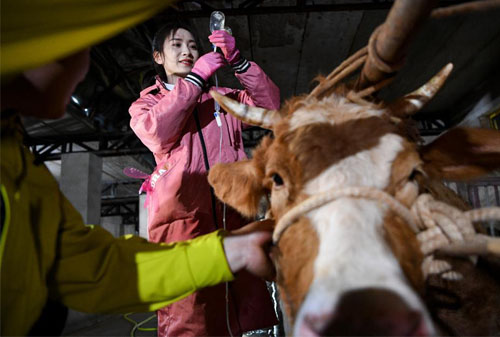
References
Curran, T. P., & Powelson, T. M. (2019). Ultrasonographic Pregnancy Diagnosis in Small Ruminants. Sheep & Goat Practice Journal.
Tozer, P. R., & Manteca, X. (2020). Beef Cattle Pregnancy Scanning with B‑mode Ultrasonography. Animal Reproduction Science.
Agricultural and Food Systems Institute. (2023). Precision Livestock Tools in Mixed‑Species Systems. AFI Reports.
Food and Agriculture Organization of the United Nations. (2022). Guidelines for Mobile Veterinary Ultrasound Clinics in Developing Countries. FAO Publications.

